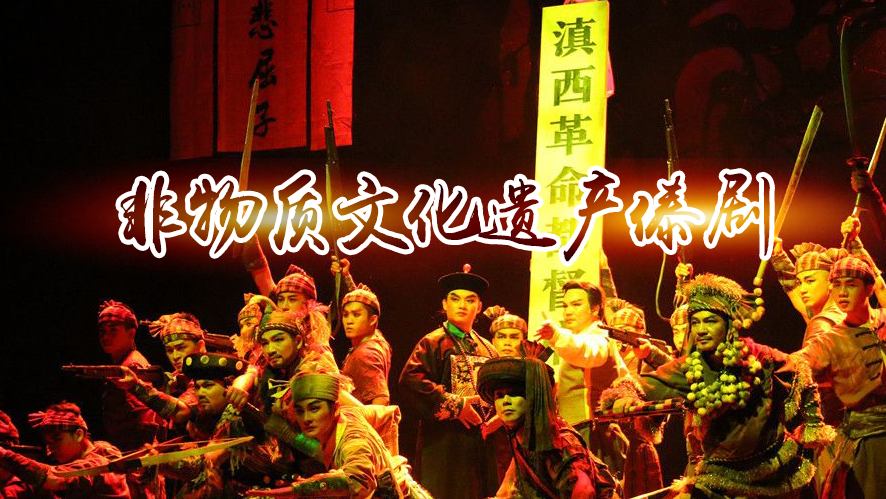Intangible cultural heritage “Dai Opera”
非物质文化遗产“傣剧”

Course Syllabus 课程章节
1Dehong Dai Opera was originally produced in the Xincheng, Zhanxi and Zhina areas of Yingjiang County, Dehong Dai and Jingpo Autonomous Prefecture. It has a history of nearly two hundred years and was included in China's national intangible cultural heritage protection list in 2006. Dai Opera was originated from the Dai singing and dancing performances and Buddhist scriptures with certain characters and plots, and absorbed the artistic nutrition of Yunnan Opera and Shadow Play, and then gradually formed a relatively complete form of opera. After studying in Japan, Dao Anren returned to Dehong Prefecture, Yunnan Province, China and formed the first professional troupe of Dai Opera around 1910. In 2004, the representative work of Dai Opera "Nan Xila" won the Gold Award for the play in the new play performance of Yunnan Province. In October 2007, it won the "Comprehensive Gold Award" and "Golden Peacock Award" in the first China Ethnic Minority Drama Festival. The large-scale Dai drama "Dao Anren" with the theme of democratic revolution history is successfully premiered in Mangshi, Dehong in 2012.
德宏傣剧,最初产生于德宏傣族景颇族自治州的盈江县新城、盏西、支那一带,至今流传近两百年的历史,2006年被列入中国国家级非物质文化遗产保护名录。傣剧源于有一定人物情节的傣族歌舞表演及佛经讲唱,后吸收滇剧、皮影戏的艺术营养,逐步形成比较完整的戏曲形式。1910年左右刀安仁从日本留学回到中国云南省德宏州,组建了第一个傣剧专业剧团。傣剧代表作《南西拉》2004年在云南省新剧目展演中荣获剧目金奖,2007年10月荣获中国第一届中国少数民族戏剧会演“综合金奖”和“金孔雀大奖”;民主革命历史题材大型傣剧《刀安仁》于2012年在德宏芒市首演成功。




